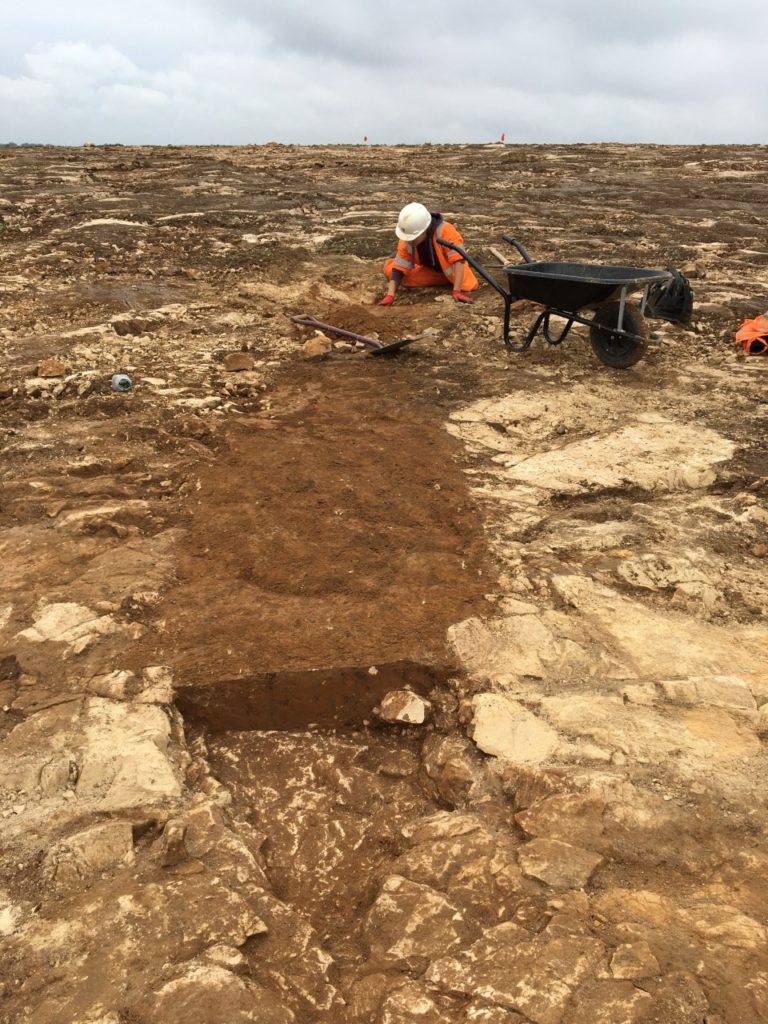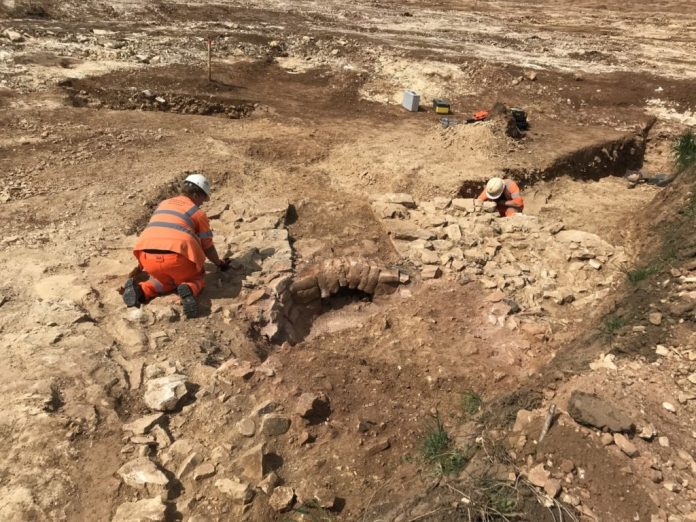Archaeological Research Services Ltd have recently been carrying out excavations on the site of Holme Hall Quarry near Rotherham, operated by Breedon Group, where they located the remains of what appears to be a late Iron Age/early Romano-British landscape.
This is characterised by a double-ditched droveway which would have been used as a route by people and livestock and probably once had a pair of external banks. The droveway forms the boundary to many surrounding field systems as well as providing access to many of them, as evidenced by small entryways from the droveway into the fields that have been identified. The layout of the field boundaries, at staggered intervals from the droveway, is characteristic of the late Iron Age – early Romano-British agriculture of this region, and is often referred to as ‘brickwork field systems’. Only a few artefacts have been found on the site although the small amount of pottery appears to place the site within the proposed historical period.

In the extreme south-east corner of the site they also encountered a a 19th century Victorian lime kiln buried within a backfilled stone quarry (which also appears to date to the early 19th century or before).
This kiln and quarry appear to have gone out of use by the time the first Ordnance Survey map of the area was produced in 1851. This date suggests that the lime kiln may well have been constructed in answer to the food shortages that were occurring in Britain and across Europe towards the end of the Napoleonic wars. Burning and spreading lime was traditionally used to increase the productivity of farmland, acting as an early chemical fertiliser. Alternatively, the kiln may have been used for producing lime for lime wash render and mortar. The high level of preservation of this kiln is probably due to the ramshackle method of its construction, having been built into the base of an existing limestone quarry on average 1.5-2m below the ground surface. This would have aided in both the stoking (which would occur below ground) as there was already access at this level from the base of the quarry, and filling (where turf and limestone would be tipped into the top of the kiln).
more images and news is available here
Read more from Archaeological Research Services Ltd

